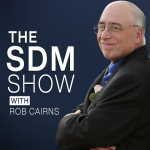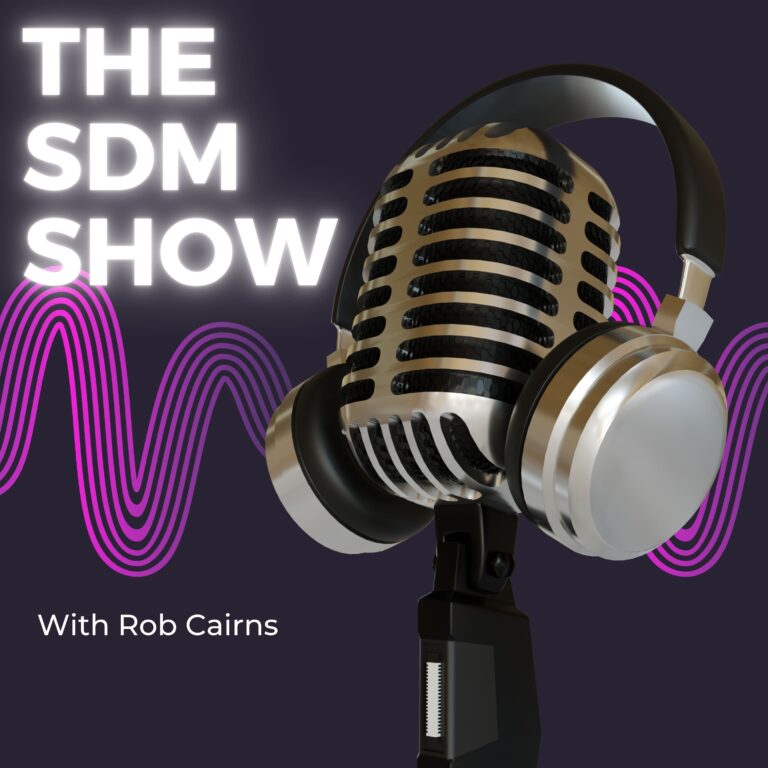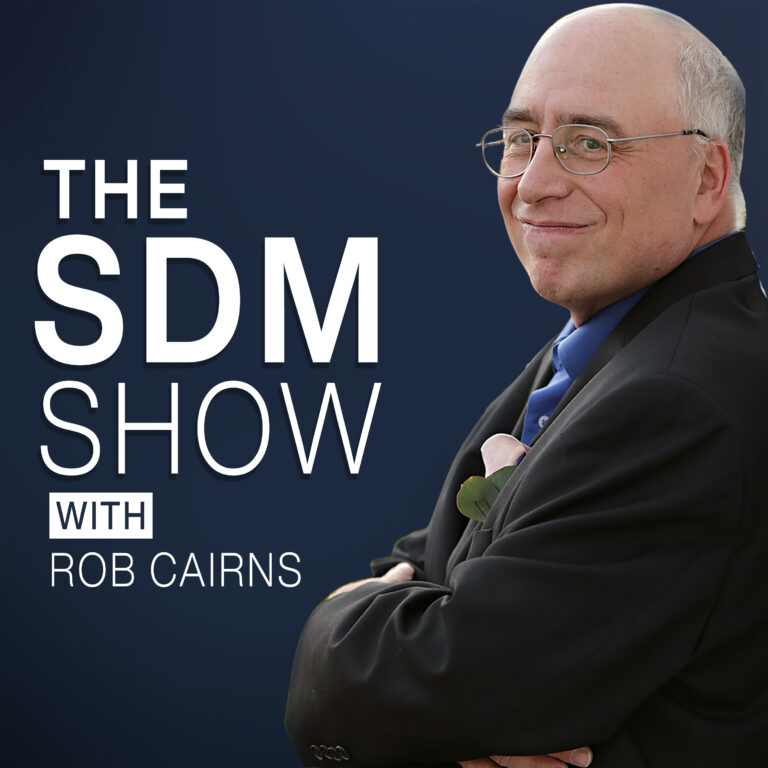Episode 461 SEO with Warren Laine-Naida SEO and Accessibilty
Show Summary
Warren Laine-Naida joins the SDM show to talk about SEO and accessibility.
- Why SEO?
- How do SEO and Accessibility relate?
- Things you should do on your website.
Show Notes
Hey there. I’m Warren Laine-Naida and I live and teach here in in Germany. Focus is mostly WordPress Seo Rob and I go way back and and if you’re not already. Connected with me. You can find me on Twitter. Ex. I still call. It Twitter at Warren L Neida. So Rob asked me to talk a bit about one of my favorite topics, which is SEO and really importantly connected topic to that is accessibility. For me, actually you know the 2GO together really well when it comes to. Another buzzword we hear about a lot, and that’s sustainability, because if you’ve got an accessible website, if your if your SEO is on track, then what you basically built is a sustainable system and that’s great for business. So you know. Anytime people say, OK, Warren, explain a sustainable and accessible SEO friendly website, what do you? So what I’m talking about here is I want to build a website that’s going to last. I want everybody to find it easily and I want to build it once, so I want it in plain sight. I want it built right and so I don’t have to touch it again. That’s really for me. You know that in a nutshell, if we’re talking accessible, if we’re talking a sustainable SEO website, you know. I think you. Know when it comes to like sustainability, accessibility, AI it these are terms like organic and climate friendly. We see them in everything you know, cookie packages, shoes, buildings. But you know I’m not using these terms for click bait. It’s a podcast anyway, so you’re not going to be clicking. But they’re really important when it comes to SEO. I think they’re more important than keywords or backlinks. I’m I’m going to say I’m kind of old fashioned, but then I should be interested in keywords or backlinks. But you know I I think there’s a lot more to SEO than than. Is that you know, I I’m no big fan on domain authority scores either because I think where you know a lot of people use those just to push those back links. So for me, when I’m talking about accessible SEO, I’m also and I think this is important. Today, more so than it was before, I mean, a year ago, maybe not. But now accessible SEO really means also an AI friendly website. UM, and this is going to be really important going forward if we’re talking sustainable marketing strategy. So I want something to put into place and it’s going to, you know, maybe it’s going to outlive me, you know, so you know accessibility. So accessibility means that. Everyone can use my website and this is really important so. This is important because I mean, we say everybody, everybody’s not my customer, OK? Sure. But in general, we’ve got everyone has 2 customer groups. We’ve got people and we’ve got algorithms. All right, anyone putting content out there knows that machines decide what people read. So there’s everyone has 22 target groups, so accessibility from ground floor, we’re talking about people we’re talking about. Algorithms. So if it’s a search machine or if it’s social media, whatever it is online shop news platform content is going to be filtered by machines. So our content, if we’re talking about accessible SEO, we’re talking about AI SEO as well. So we want to. If you want to appear in AI search results, I mean Google and Bing. There yesterday there is a huge move towards using search AI for informative search and if you know informational search that’s 80% of our search. There’s no surprise that you know more and more people are turning to this. I’m seeing numbers like 10%. I’m seeing numbers like 20%. And we know Google is losing market share. We don’t need to go to Google anymore and say, hey, what’s the what’s the best way to fight, you know, dry hair. We’re probably going to ask Alexa or Siri or use, you know, possibly ChatGPT for that. So I think that’s really important. Accessibility in SEO or accessible SEO. Also means AI. And I said, we want to make it future perfect future. We want to future proof our our SEO. So if it’s going to be discoverable in the future, I think this also means that our websites need to be around in the future. So now we’re talking, we’re coming back to this idea of sustainable web design practices. So accessibility, sustainability really barrier free and here this also means AI. So yeah, I think for me when I’m thinking SEO. I’m thinking words. All right, good friend of mine, Bridget Willard. Salt of the earth. She always says that the Internet is words worn, SEO is words worn. She is about words and this is really important. You know, if we use words correctly, it’s kind of like an elevator speech for our website, for our product, whatever it is you know you nail the elevator speech and this is the most important thing. They say the headline is 80% of your article. OK, so how many words are we talking? You know, how many words are in the made to description? How many words are in that teaser in Instagram? You know, you keep it simple. If you talk less. You know, if you’re keeping it simple, you’re you’re actually using less CO2, so you know, you know, if you use less words with the right words, now you’re being climate friendly with your SEO. I mean, I know this sort of goes off the deep end, but if you talk less and say more, this is really important. And if you think about it. What’s the most important part of your article? What’s the most important part of what you’re trying to say? It’s going to be in the first paragraph, and that’s basically your SERPS. You know, that’s what you see in the syrups. That’s your snippet. That’s your teaser. So if you, you know what you read in those first 3 seconds. Is going to decide if you’re going to remain on the page for those next 7 seconds or the next 10 seconds. So we’re talking words. OK, I said. I’m going to a big fan of keywords because I don’t think they’re really used. Effectively OK, keyword is as key to your intent key to solving your problem. Then this is OK. I can live with that. There’s a lot of words out there. I mean, I’m in in the German speaking market. I’m in the English speaking market. So it’s a lot of words. In English, how many words do we have? Half a billion or something? I mean, there’s a lot of words out there, but how many words do you use every day? How many words do your customers use? You know, I think the average person, what do they say the average person has a vocabulary, maybe a four or five. 1000 words. OK, that’s not a lot of words, so keep. The SEO keep the text keep your message simple. You save energy, you save time, you save your customers time and then you keep your content accessible. So it really comes back to that. I really don’t think it’s anything magical. It’s the sort of, you know, intersection between building our websites. Making them discoverable, making them usable. We’re talking semantic HTML. We’re talking optimized images, we’re talking clear navigation. There’s nothing magic. You don’t need to. You don’t need to reinvent as CEO. You just need to rediscover it, you know, sustainable web design goes hand in hand. With good SEO it it reduces our page weight, it it saves energy, it saves my time you know, and then you’ve got enhanced performance, you’ve got enhanced accessibility. And I think as well, you know accessibility and SEO, you know they have common goals. We’re talking about trying to improve the users experience. We’re talking about clear content structure. We’re talking about trying to enhance our discoverability. We’re trying to. Be more easily found. This doesn’t sound you know far fetched and it’s really this, you know, dovetailing accessibility and SEO. They both have mutual benefits. You know, simple things like the alt text, OK, proper heading structures, our heading hierarchy, descriptive link text. You know, these are accessibility features, but they’re common sense basic SEO. Sorry. Basic ways to improve our SEO. Oh, OK. For you know, for talking like page titles, you say, OK, Page titles, accessibility. OK, it’s easy for screen readers, it’s easy for other assistive technologies and whoops, a good page title, this helps. This helps with the click helps perhaps. Our rankings he helps. Perhaps our click through rates makes it more obvious what our page is about. The same goes for headings. The same goes for everything we’ve mentioned before. Alt text, descriptive anchor text, our navigation. Each of these show that having something that’s accessible automatically improves your SEO, you know, and I I think anything on those on any list you find with accessibility will go hand in hand. And for me, this also means that you’re building a sustainable website. Because something that’s easily found by everyone means that it’s going to be there tomorrow. You don’t need to tweak it if it’s already really, really good. So I think you know if if you’re looking at, OK, well, I can be found. You know, obviously the benefits you’ve got better user engagement, you’ve got better organic traffic, you’ve got enhanced brand reputation. But I think it’s important that this is integrated right at the beginning. Accessibility sustainability. These really are best practices and germs or best practices best practice. Uhm, and uh, you know it’s let’s say it’s core, it’s core, OK, uh core gives you stability and another one of my, you know, mentors out there. Ana beauvallet. She is all about accessibility. She always says system stability is crucial for business, and that’s really true. So think about it. If you’ve got a website that you’ve built in an accessible way. You’re building them on a core. And this stability means that you’re creating content first hand for people you’re building it. That forces you know that’s going to have a long term resonance. So you’re building also in a sustainable way, and that gives you a huge advantage over your competitors. Because if you stay close to core as possible, you’re not going to have to deal with change. You’re not going to have to deal with with any incompatibility, so you are stable and that’s good for your business. You know, I think the business is changing a lot. I mean, I got in this business in the 90s. Some of the basics are still there, but I think we’ve tried to make it or maybe not tried to, but we have made it a little over complicated and you know to be honest, what do they say? The most stable object to a stable form is a triangle. So 3 legs SEO. Accessibility and sustainability. OK, it’s not just keywords. It’s about creating content that resonates with people. It means creating content that resonates with machines. So we’re talking algorithms. It means that you are open to everyone. Your content is accessible. It’s not something trendy. It’s just smart business being a. Accessible and smart business means as well saving resources. Having a very clean fast pipeline speed wins if you get there faster because there’s nothing stumbling up your team. Tripping up your team then you’re going to get there in front of the customer before you’re compatible. Competitors, so accessibility and sustainability. It’s very energy efficient. You are adaptable, you are building to last and I think that’s where all of these paths come together. OK, so keep it simple. Optimize for everyone. You’re thinking long term and there you go. I mean I think that’s really accessibility and SEO for the whim and you can’t get it any more intelligent than that.



